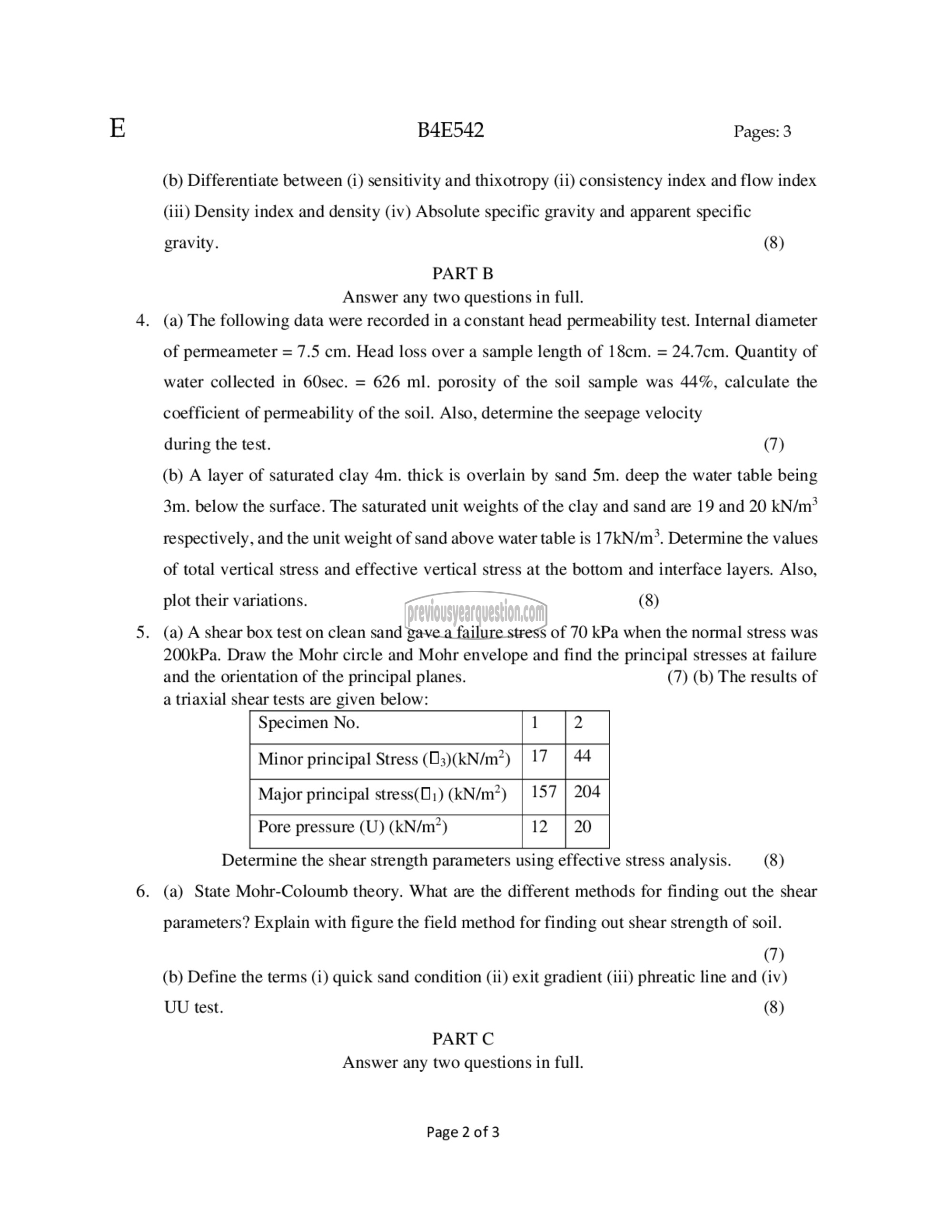APJ ABDUL KALAM TECHNOLOGICAL UNIVERSITY Previous Years Question Paper & Answer
Semester : SEMESTER 4
Subject : Geotechnical Engineering- I
Year : 2017
Term : JUNE
Branch : CIVIL ENGINEERING
Scheme : 2015 Full Time
Course Code : CE 208
Page:2
B4E542 Pages: 3
(b) Differentiate between (i) sensitivity and thixotropy (ii) consistency index and flow index
(iii) Density index and density (iv) Absolute specific gravity and apparent specific
gravity. (8)
PART B
Answer any two questions in full.
4. (a) The following data were recorded in a constant head permeability test. Internal diameter
of permeameter = 7.5 cm. Head loss over a sample length of 18cm. = 24.7cm. Quantity of
water collected in 60sec. = 626 ml. porosity of the soil sample was 44%, calculate the
coefficient of permeability of the soil. Also, determine the seepage velocity
during the test. (7)
(0) A layer of saturated clay 4m. thick is overlain by sand 5m. deep the water table being
3m. below the surface. The saturated unit weights of the clay and sand are 19 and 20 kN/m?
respectively, and the unit weight of sand above water table is 1710/1727. Determine the values
of total vertical stress and effective vertical stress at the bottom and interface layers. Also,
plot their variations. (8)
5. (a) A shear box test on clean sand gave a failure stress of 70 kPa when the normal stress was
200kPa. Draw the Mohr circle and Mohr envelope and find the principal stresses at failure
and the orientation of the principal planes. (7) (b) The results of
a triaxial shear tests are given below:
Specimen No.
Minor principal Stress (03)(kN/m?)
Major principal stress(O1) (KN/m?) | 157 | 204
Pore pressure (11) (10/72) 12 | 20
Determine the shear strength parameters using effective stress analysis. (8)
6. (a) State Mohr-Coloumb theory. What are the different methods for finding out the shear
parameters? Explain with figure the field method for finding out shear strength of soil.
(7)
(b) Define the terms (i) quick sand condition (ii) exit gradient (iii) phreatic line and (iv)
UU test. (8)
PART C
Answer any two questions in full.
Page 2 of 3
